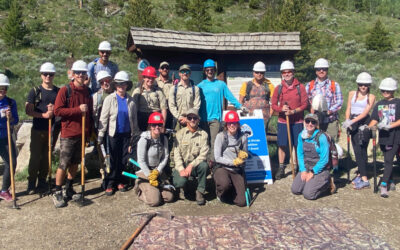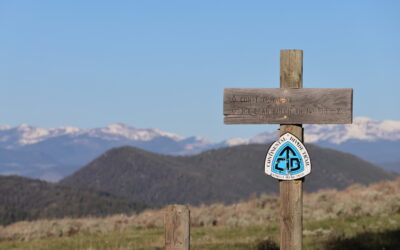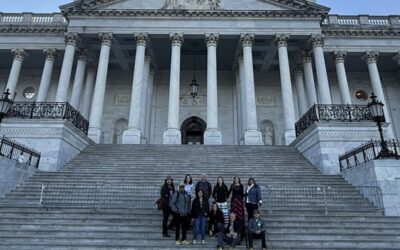The U.S. Department of Interior announced changes to the Oil and Gas Leasing Program that could signal a significant shift in the federal government’s priorities
GOLDEN, CO (April 19, 2022) — On Friday of last week, the U.S. Department of Interior (DOI) released a Press Release announcing reforms for DOI’s onshore oil and gas lease sales. This announcement comes just months after a November 2021 report from the agency on the Federal Oil and Gas Leasing Program, which detailed the state of the program and the outlook for future activities.
Details of the reforms are still being released, including the final environmental assessments and sales notices for upcoming oil and gas leases issued by the Bureau of Land Management (BLM) today. DOI stated that this action from BLM reflects the agency’s balanced approach to energy development and management of public lands and waters.
“CDTC is excited to see that under Secretary Haaland, the Interior Department’s Oil and Gas Leasing Program is continuing to be evaluated and managed in a way that proactively plans for a more sustainable future,” says Teresa Martinez (she/her/ella), Executive Director at CDTC. “Many of the Gateway Communities along the Continental Divide Trail that have traditionally relied on extractive industries are striving to find this same balance between energy development and land protections. And the continued leadership from DOI on this urgent issue will help to
ensure the opportunities for a healthy community and robust economy continue to grow, while at the same time protecting the lands and waters that are central to the way of life for those living in the Rocky Mountain West.”
The BLM analyzed acreage that was potentially available and eligible for oil and gas lease sales in nine states, including the CDT states of New Mexico, Colorado, Wyoming, and Montana. Of those 646 parcels encompassing approximately 733,000 acres that had previously been nominated for leasing by energy companies, the final sale notices will offer roughly 173 parcels on 144,000 acres — accounting for an 80% reduction in the acreage originally nominated. This reduction is attributed to consultation and engagement with Tribes and communities, as well as the environmental review that takes into consideration factors such as wildlife habitats and migration corridors. While both consultation and environmental analysis are legal requirements for this process, new guidance from department leadership and the Biden administration has strengthened consultation best practices and enhanced the environmental analysis with additional layers of evaluation for a more rigorous assessment.
“The Department’s Oil and Gas Leasing program has favored businesses over people and the land since its inception. This long-overdue reprioritization from the Bureau demonstrates that current leadership within the agency is more proactively acting in the interests of communities, plants, and wildlife that rely on the cooperative stewardship of land and waters for their vitality,” say L Fisher (they/them/ellos), Trail Policy Manager at CDTC. “And while this is an exciting evolution of DOI’s strategy under Secretary Haaland’s leadership, continuing consultation and collaboration with communities, Tribes, recreationists, conservationists, and other outdoor stakeholders will show that this is only the beginning of the work to reform this antiquated system. The reality is that, according to scientists and experts, this significant scale back of extractive industries is the minimum for what needs to be done to combat the climate crisis; we must continue to prioritize real, measurable actions that directly help communities on the frontlines of climate change’s impacts, to protect clean air, water, and food to live and open spaces to connect.”
Of the BLM’s sales notices posted today, many of the parcels eligible for leasing are near existing development and infrastructure. Additionally, as part of its environmental analysis which informed its decision, the agency disclosed the greenhouse gas emissions (GHG)
emissions and the social cost of GHG, taking into account how increased GHG will contribute to the spread of disease, coastline degradation, and other events that have consequences for the general public.
About the Continental Divide Trail
The CDT is one of the world’s premiere long-distance trails, stretching 3,100 miles from Mexico to Canada along the Continental Divide. Designated by Congress in 1978, the CDT is the highest, most challenging and most remote of the 11 National Scenic Trails. It provides recreational opportunities ranging from hiking to horseback riding to hunting for thousands of visitors each year. While 95% of the CDT is located on public land, approximately 150 miles are still in need of protection.
About the Continental Divide Trail Coalition
The CDTC was founded in 2012 by volunteers and recreationists hoping to provide a unified voice for the Trail. Working hand-in-hand with the U.S. Forest Service and other federal land management agencies, the CDTC is a non-profit partner supporting stewardship of the CDT. The mission of the CDTC is to complete, promote and protect the Continental Divide National Scenic Trail, a world-class national resource. For more information, please visit continentaldividetrail.org.



